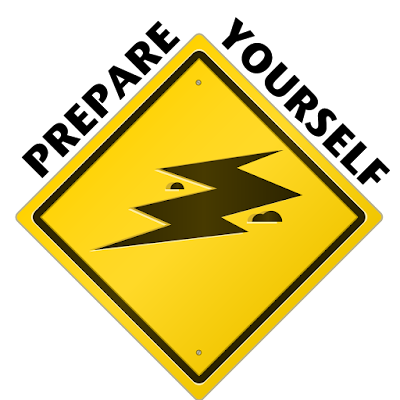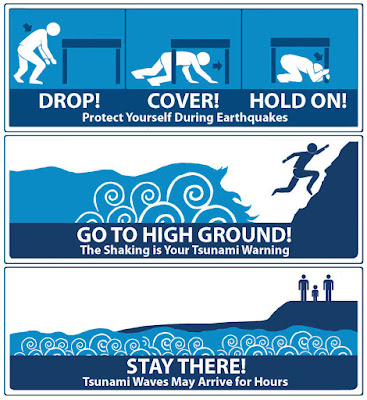To answer some of these questions you may need to enter uncomfortable or small spaces. You may want to have an experienced inspector or professional structural engineer or competent architect checks your home, instead. Whatever choice you make, take some time to do this before the next earthquake strikes. Here is a checklist that will help you focus on how to strengthen your home.
Earthquake Preparedness Tips
You can protect your home by modifying it, or retrofitting it, in two different ways:
Nonstructural retrofits protect your home’s contents against damage with little cost and effort. Examples of retrofits include:
a) securing wall TV, securing water heaters, large appliances, bookcases, pictures and bulletin boards;
b) latching cabinet doors; and
c) using safety film on windows. In most cases, you will not need a building permit. It is a good idea, however, to contact your local building department to make sure.
Structural retrofits are modifications that increase an existing building's ability to withstand earthquake activity. For organizations that want increased earthquake protection but cannot afford to rebuild their existing stock of buildings, retrofits may offer the only alternative. The most vulnerable buildings are unreinforced masonry (URM) since they face the highest probability of collapse during an earthquake. According to the Office of Technology Assessment, retrofits for URM buildings cost an average 23 percent as much as new construction. Faced with such high costs, some building owners may decide to rebuild. However, some organizations simply cannot afford to rebuild (23 percent is cheaper than 100 percent).
Retrofits strengthen your home’s structure or skeleton so it can better withstand the force of an earthquake. Your home’s structure is made up of many different parts, or components, which must work together in order to resist an earthquake.
Modifications to your home’s structure tend to be quite involved and generally require the expertise of a registered design professional (engineer, architect or building contractor) and your local building department’s approval. If you have any questions or concerns about what you see, contact a professional engineer or architect.
To achieve the objective of earthquake-resistant building, designs should comply with the following standard:
1) Regular shape of building
2) Height to be less than three times the width (H < 3B)
3) Length to be less than three times the width (L < 3B)
4) Load path should be strictly vertical no offsets to be allowed between wall or column footprints on different floors
5) In masonry buildings, the unsupported length of wall should be restricted and the wall should have adequate thickness
6) At least three load-bearing structural walls in each direction for masonry buildings
7) Seismic bands for resisting lateral forces to be placed all around masonry buildings at foundation, plinth, sill, lintel, and roof levels. This provides integrity to different orthogonal walls, acting as a box during earthquakes
8) Strengthen the joints of masonry buildings at the corners and T-joints with stitches
9) Provide through-stones at an interval of not less than 2 ft for stone masonry buildings
10) Ensure structural integrity of buildings from the foundation to the roof level by tying all individual elements to each other
11) Provide at least three columns in perfect grid in each direction for framed structures
12) Follow the principle of “strong columns, weak beams”
13) Provide adequate size of structural elements, such as columns and beams
14) Ensure high quality of materials and workmanship
15) Ensure proper bar detailing and anchorage at beam column joints
16) Ensure proper batching, mixing, placing, compacting, and curing of concrete
Related Post: Download Free Maps, No Registration, Click here, PHIVOLCS West Valley Fault Line Google Map
You will give yourself and your family a better chance of escaping harm during an earthquake by taking as many of the precautions. But, these steps are only the beginning. To protect yourself as completely as possible, here are some added suggestions:
What to Do?: Before an Earthquake Strikes
1) Teach everyone to “duck” or drop to the floor, take “cover” under a desk or table and “hold” on to it when an earthquake strikes. Remember the phrase: “Duck, Cover and Hold.”
2) Learn first aid and CPR.
3) Put together an emergency kit that includes at least a three-day supply of drinking water and food that needs no refrigeration and, generally, no cooking; emergency cooking equipment, if required; a portable NOAA weather radio; first aid supplies and medications; basic tools, such as a wrench, a flashlight and gloves; portable lanterns and batteries; credit cards and cash; and important documents, including insurance policies.
4) Know where your gas, electric and water main shut-off controls are and how to turn them off if there is a leak or electrical short. Make sure all adult and teenage members of your family know how to shut off each utility.
5) Become familiar with your community’s disaster preparedness plans and create a family plan. Know where the closest police, fire and emergency medical facilities are located.
6) Plan an escape route from your home and neighborhood and designate an emergency meeting place for the family to reunite. Establish a contact point to communicate with concerned relatives.
7) Periodically review your homeowner’s insurance policy with your insurance agent or company to make sure that, if you are the victim of a disaster, you have enough coverage to rebuild your home and life. The typical homeowner’s insurance policy does not include earthquake coverage. If you are in an earthquake-prone area, you should consider purchasing earthquake insurance.
What to Do?: During an Earthquake
1) If you are indoors, “duck, cover and hold” until the shaking stops. Do not try and run out of a building – you may be hit by falling debris.
2) If you are outdoors, move quickly and safely into the open, away from electrical lines, trees and buildings, and wait for the shaking to stop.
3) If you are driving, carefully and slowly bring your vehicle to a stop at the side of the road away from traffic. Make sure that you do not stop on or under bridges. Do not stop under power lines or near roadway signs that might fall. Once the shaking has stopped, you can continue driving. Watch carefully for possible damage to the roadway.
What to Do?: After an Earthquake Strikes
1) Check for hazards, such as gas or water leaks and electrical shorts. Turn off damaged utilities. Have the fire department or gas and electric companies turn the utilities back on when the area is secured.
2) Check for injuries and administer first aid as needed.
3) Check your food and water supplies. Do not eat anything from open containers near shattered glass.
4) Listen to and follow the advice and recommendations of local aid organizations, including the emergency management office, the fire department and the utility companies.
5) Keep roads and phone lines clear for emergency use.
6) Be prepared for aftershocks.
Related Post: How to Apply for NBI Clearance Online 2015: Requirements for New Applicants, Renewal, For Abroad, Application Fees and NBI Branches List
Watch Video: Earthquake Safety Tips Video
References:
APA: The Engineered Wood Association. 1997. Earthquake Safeguards. Tacoma, WA: APA,
Association for Bay Area Governments. 1999. Techniques for Mitigating Earthquake Hazards. www.abag.ca.gov
California Governor’s Office of Emergency Services and Federal Emergency Management Agency. 1993. An Ounce of Prevention: Strengthening Your Wood-frame House for Earthquake Safety. Sacramento, CA: California OES.
California Governor’s Office of Emergency Services and Federal Emergency Management Agency. 1995. Guide to Strengthening and Repairing Your Home Before the Next Earthquake. Sacramento, A: California OES.
California Seismic Safety Commission. 1998. The Homeowner’s Guide to Earthquake Safety. Sacramento, CA: California SSC.
Federal Emergency Management Agency. 1994. Reducing the Risks of Nonstructural Earthquake Damage. FEMA 74. Washington, DC: FEMA.
Federal Emergency Management Agency. 1998. Homebuilder’s Guide to Seismic Resistant Construction. FEMA 232. Washington, DC: FEMA.
Federal Emergency Management Agency. 1993. Identification and Reduction of Nonstructural Earthquake Hazards in Schools. FEMA 241. Washington, DC: FEMA.
Federal Emergency Management Agency. FEMA: Mitigation “How To” Series. www.fema.gov
Gantz, Lee. 2013. Earthquake Preparedness: Emergency Survival Supplies and Safety Tips. CreateSpace Independent Publishing Platform. ISBN-10: 1492375160
Gray, Ralph Gareth. 1991. Riding Out the Big One. Fine Homebuilding. Two Part Series: December 1990/January 1991.
Kimball, Virginia. 1992. Earthquake Ready: The Complete Preparedness Guide. Malibu, CA: Roundtable.
Mroz, M.P., and T.T. Soong. 1997. NIST GCR 97-732: Fire Hazards and Mitigation Measures Associated with Seismic Damage of Water Heaters. Gaithersburg, MD: National Institute of Standards and Technology.
Sims, Jeffery. 2015. The No-Nonsense Guide To Earthquake Safety (Enhanced Edition). lulu.com. ISBN-10: 1329026608
Southern California Earthquake Center. 1995. Putting Down Roots in Earthquake Country. www.scecdc.scec.org
U. S. Department of Homeland Security (Author), Federal Emergency Management Agency (Author). 2013. Risk Management Series Publication: Design Guide for Improving School Safety in Earthquakes, Floods, and High Winds. CreateSpace Independent Publishing Platform
U.S. Department of Homeland Security (Author), Federal Emergency Management Agency (Author). 2014. Earthquake Safety Guide for Homeowners. CreateSpace Independent Publishing Platform. ISBN-10: 1494992213




0 comments:
Post a Comment
Feel Free to Post Your Opinions or Violent Reactions and Do No Evil. Read our
Comments Policy.